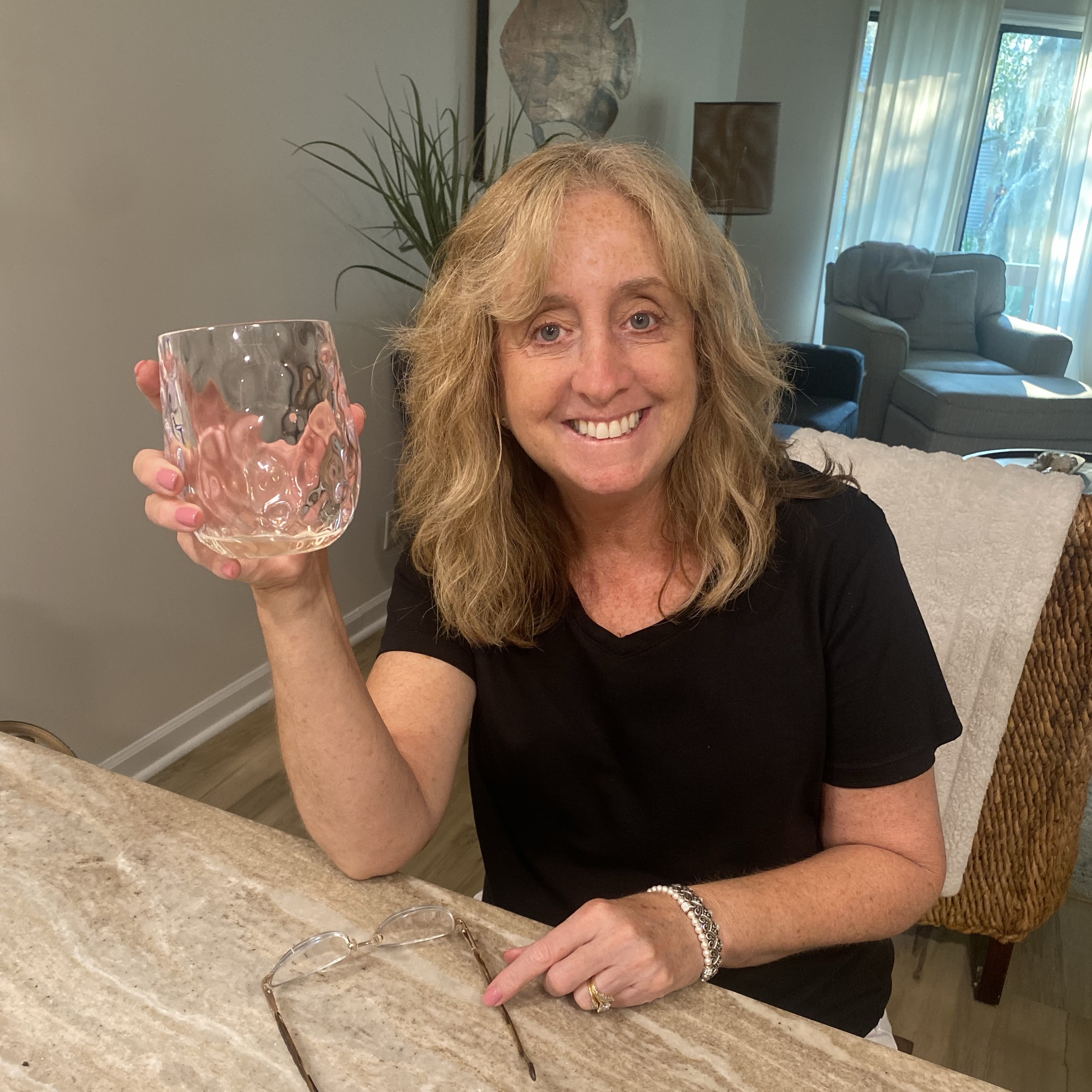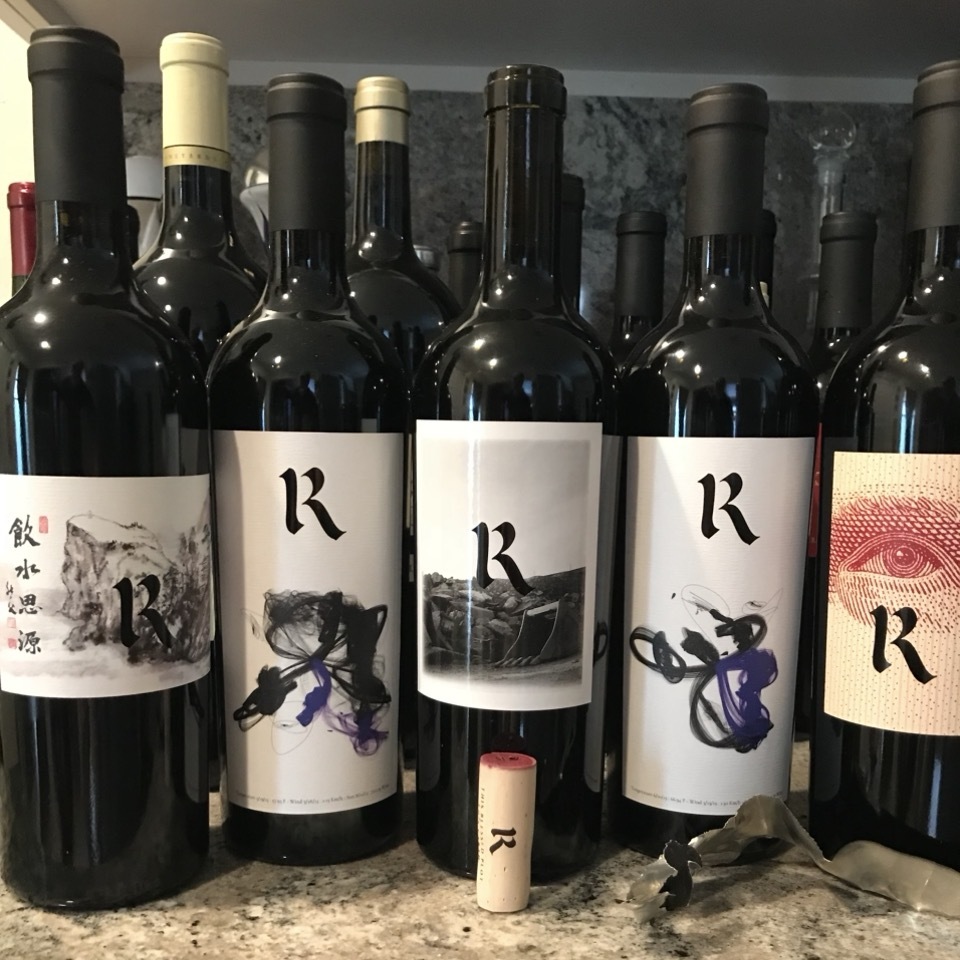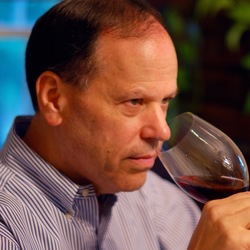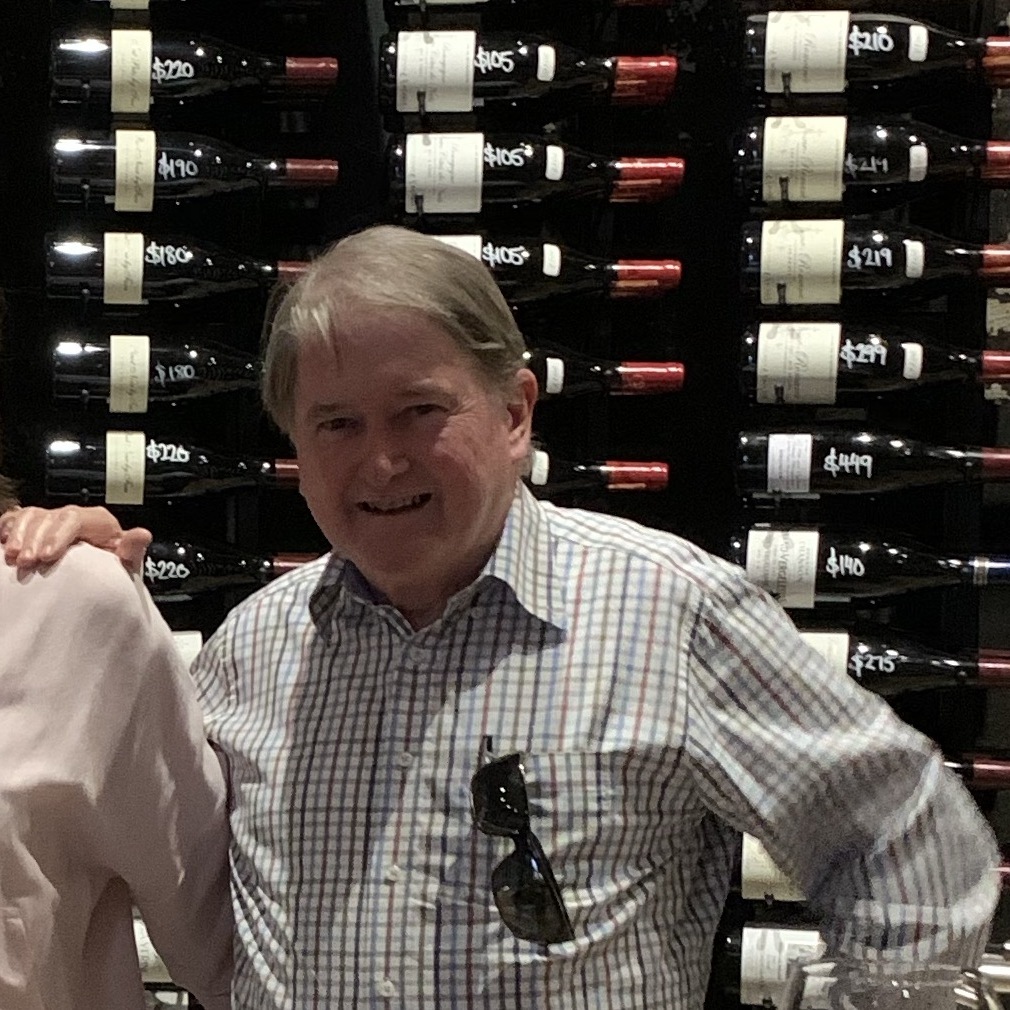Inheritance Vineyards
Château La Mission Haut-Brion
Pessac-Léognan Red Bordeaux Blend 2001
So, if it’s my birthday celebration, there is a juicy ribeye & some old(er) Claret.
My only disappointment with this bottle is as good as it is, there are better things still down the road.
The nose reveals classic Claret. There are earthy, funky fruits of; blackberries, black raspberries, dark cherries, black plum, baked strawberries with shades of raspberries. Steeped fruit teas, limestone minerals, dry crushed rocks, stones, black, rich earth, clay, dry herbs, dark berry cola, cedar, leather, not quite fresh tobacco, underbrush, graphite, gentle, dark spice, slight peppery notes, clove, touch of nutmeg & cinnamon & vanillin, anise to black licorice, eucalyptus notes with fresh & slightly candied florals of, red, dark, blue, purple & violets.
The body is medium full with rounded, nicely resolved, tarry tannins. The structure, tension, length and balance are really singing. It would be good to have another 2001 LMHB in ten years. While 2001 wasn’t a critically acclaimed vintage, I think LMHB over performed the vintage. As well, it followed a grand 2000 vintage which, handicapped it from the start. Ripe; blackberries, black raspberries, dark cherries, black plum, baked strawberries, bright cherries, rhubarb, figs, with shades of raspberries. Steeped fruit teas, limestone minerals, dry crushed rocks, stones, black, rich earth, clay, dry top soil, dry herbs, dark berry cola, cedar, leather, not quite fresh tobacco, underbrush, graphite, gentle, dark spice with soft heat, slight peppery notes, clove, touch of nutmeg & cinnamon & vanillin, anise to black licorice, eucalyptus notes with fresh & slightly candied florals of, red, dark, blue, purple & violets. The acidity is excellent...like a gentle rain shower. The long finish is elegance defined, extremely well balanced ending in soft, round, dry, dusty tannins with beautiful spice.
Photos of; Chateau La Mission Haut Brion & estate vines, beautiful barrel room, pond & Roman columns and the back vow of the Chateau.
Please indulge me while I post some history on this grand producer. As much as I love the wine, I love the history & people that do the hard work to bring us such great wines.
Chateau La Mission Haut Brion is not quite as old as Chateau Haut Brion. However, they are opposite side of the road neighbors. La Mission Haut Brion dates back to the late 16th century. The property came into being after it was purchased by Jean de Pontac in 1533. US winery history is a baby compared to France.
In 1607, the estate changed hands. It was inherited by Ms. Olive de Lestonnac. What an inheritance!
In 1815, something rare happened. Chateau La Mission Haut Brion became the property of an American owner, the Chiapelle family. At the time, the family was already involved in the Bordeaux wine trade. In fact, they knew about the business as they had managed a myriad of different estates including Chateau Cos d’ Estournel.
La Mission Haut Brion continued to change hands until it was finally sold to another American family, the Woltner’s. Frederic Woltner purchased La Mission Haut Brion in 1919. The also became owners on Howell Mountain.
It changed hands one final time in 1983 when it was purchased by Domaine Clarence Dillon, the owner of neighboring, Chateau Haut Brion. They renovated the entire property, starting with replanting the vineyards which, was completed in 1987.
The 26 hectare vineyard of Chateau La Mission Haut Brion is planted to; 45.8% Cabernet Sauvignon, 43.8% Merlot and 10.4% Cabernet Franc. 3.5 hectares of vines are reserved for the production of the white Bordeaux.
To produce the red wine of Chateau La Mission Haut Brion, the wine is vinified in large, 180 hectoliter, temperature controlled, stainless steel vats and aged in 100% new, French oak for an average of 22 months. The annual production of La Mission Haut Brion averages between 6,000 and 7,000 cases per year. — 6 years ago
Mazzocco
Inheritance Alexander Valley Cabernet Sauvignon 2014
I’ve posted these before - Mazzocco wines are a stable, consistent treat. Nice, milk chocolate/vanilla richness & finish. I’ve never found one that disappoints. — 4 years ago
Louis Jadot
Domaine Gagey Les Drazeys Chambolle-Musigny Pinot Noir 2015
The French Revolution detonated everything about the old order of France, and wine was no exception - far from it. The great vineyards of Burgundy, that had been tended to and ached over by Benedictine and Cistercian monks for centuries, were confiscated and auctioned off to the petite bourgeoisie in Paris and Dijon. The Napoleonic inheritance code, which guaranteed an even split between all children, led to these ancient plots being further divided up with each passing generation.
It wasn't long before there was a multitude of disinterested Parisians who owned a few vines in the Cote d'Or as their birthright. Négociant houses, such as Louis Jadot, popped up to make deals with these small landholders, aggregate their scattered plots, and bring their wine to the world.
Modern Burgundy is still very much a reflection of its transformation during the Revolution, with some of the world’s most famous and valuable land portioned out into tiny parcels. It’s no wonder demand outstripped supply long ago!
(This is adapted from notes for Le Dû’s Wines ‘History of Wine 1453AD-Present’ seminar, where this wine was poured) — 6 years ago
Rene Rostaing
Ampodium Côte-Rôtie Syrah 2010
2010 was a very good vintage in Rhône. Rostaing is a well know producer with people that know and drink Northern Rhône wines, not so much with others that do not. The Ampodium is the entry level into Rene & Pierre Rostaing wines. It is a blend of 13 vineyards in Northern Rhône. They are simply one of the very best producers in the region. I spent an afternoon with Rene & his son Pierre tasting in the their cellar and in their La Landonne vineyard as shown in the photos. The 2010 is drinking beautifully with many good years ahead. On the nose; ripe & slightly stewed/baked fruits of; blackberries, dark cherries, strawberries, creamy raspberries, stewed plum, black raspberries, cherries, steeped fruit tea, dry crushed rocks, iron pan, some white & black pepper, bacon fat, grilled savory meats, pork, black licorice, black cherry cola, decayed & fresh red florals with violets. The body is round and medium full. The tannins round, still a little chewy & around 55% resolved. The length, texture, tension and balance are in near perfect harmony. The fruits are; round, ruby & ripe; slightly stewed/baked fruits of; blackberries, dark cherries, strawberries, creamy raspberries, stewed plum, black raspberries & cherries. Steeped fruit tea, dry crushed rocks, chalky minerals, iron pan, coffee grounds, spice, some baking spices w/hints of vanilla, white & black pepper, drying blood, dry herbs/bay leaf, dry stems, moderate levels of bacon fat & pork, grilled savory meats, black licorice, black cherry cola, decayed & fresh red florals with fresh violets for days. The acidly is round and dripping. The long finish is plush, velvety delicious and lasts & lasts. In good vintages, I would put this in blind with the best of of the best new world wines from any vintage that many love; SQN, Booker, Saxum, Alban, Cayuse, Horsepower etc.. I’d bet most of you would pick it over these producers that cost much more $$$. It’s simply one of the best pound for pound wines/producers for this varietal. Especially, for the $$$. Wow, what a wine for the $. $55 upon release. Photos of; Winemaker Pierre Rostaing and our group in their La Landonne vineyard, the small sign that barely identifies their Estate, an example of the Quartz mineral that runs throughout their La Landonne vineyard and the view back onto the river from the top of the very steep La Landonne Vineyard. Producer notes and history...Rene Rostaing produced their first wine in 1971. However, it took almost three decades before wine became a full time occupation for Rene Rostaing. Domaine Rene Rostaing came about through marriage. The wife of Rene Rostaing was the daughter of the famed Cote Rotie grower, Albert Dervieux, and the niece of Marius Gentaz-Dervieux who gave Christine the vineyard land that became the Northern Rhone estate for Rene Rostaing. Through inheritance from Albert Dervieux Thaize (his father-in-law) who retired in 1990, and from Marius Gentaz Dervieux, his uncle, Rene Rostaing expanded his holdings, giving him some of the best terroir in Cote Rotie. The new vineyard land was basically 3 small parcels in the La Landonne, Cote Brune and Vialliere lieux-dits. This initial expansion from his initial tiny parcel, allowed Rene Rostaing to change careers and become a full time vigneron. Since 2007, the estate has managed by Pierre Rostaing, (son) of Rene Rostaing. Currently Rene Rostaing owns 7.5 hectares of vines that is spread out among 20 different parcels located in 14 locations. Perhaps the most celebrated vines of Rene Rostaing are the 1.6 hectares of vines they own in the La Landonne vineyard (photo). On La Landonne, the vines are more than 60 years old. Some vines are even close to 100 years of age! Those are his largest holdings. The smallest vineyards of Rene Rostaing are located on Cote Blonde. Rene Rostaing also has vines planted in; Fonjean, La Vialliere, Le Plomb, Bouchare, Leyat, La Roche and La Tupin. Their oldest vines are more than 70 years old and are used for Rene Rostaing Cote Blonde. The majority of those plantings are on the steep hillsides with mica, schist and rocky soils. 25% of those vines are closer to the bottom of the slopes and on the flats. Rene Rostaing remains a traditional Cote Rotie producer who is not among the last to harvest. His wines are aged using very little new, French oak barrels. On average, Rene Rostaing Cote Rotie are aged in about 10% new French oak barrels. Rene Rostaing produces 4 different Cote Rotie wines. Rene Rostaing Ampodium, which was previously known as Rostaing Cuvee Classique, is a blend of 13 sections of different vineyards, but it does not include their best holdings on La Landonne or Cote Blonde. The fruit for Rene Rostaing Ampodium has at least 40% or more of the stems removed and run between 12-13.5% abv. The wine is usually made from 100% Syrah and is aged in an average of 15% to 25% new, French oak barrels. The amount of new oak can be less, depending on the character of the vintage. About 1,750 cases are produced each year. The wine is no longer called Cuvee Classique, the name was changed to Rene Rostaing Ampodium with the 2009 vintage. Rene Rostaing La Landonne comes from a terroir consisting of sands with iron oxide and traces of quartz. This wine is always produced from 100% Syrah. The grapes are partially destemmed, with about 10% to 20% of the stems removed, depending on the vintage. There are vintages when no destemming takes place. The remainder of the grapes are whole bunch fermented in stainless steel vats. Rene Rostaing is not a believer of using too much new oak for the aging, which on average uses 10% new, French oak barrels and the remainder of the harvest is aged in demi-muids (600 liter) and French oak barrels. This wine is like most wines from La Landonne, masculine and meaty in character, requiring at least a decade to soften and develop. On average, Rene Rostaing La Landonne produces less than 600 cases depending on what the vintage delivers. Rene Rostaing Cote Blonde is perhaps his best. It’s produced from a blend of 95% Syrah and 5% Viognier. The grapes are co-fermented. The vineyards is planted in the region call Arzel. Arzel is a poor, mineral laden soil with deposits of Silex and Mica on a steep hillside. The vines are more than 50 years of age. The grapes are partially destemmed…35% to 50% of the stems are removed. The remainder of the grapes are whole bunch fermented in stainless steel vats.
The remainder of the harvest is aged in demi-muids. This one is the hardest to find and most collectible of all their wines. In fact, they only produce close to an average of 350 cases of Cote Rotie in most vintages. Rene Rostaing Cote Brune made its debut with the 2013 vintage. The vines were once part of the holdings of Marius Gentaz, which eventually passed to Rene Rostaing. Rostaing replanted those vines in 2000. Made from 100% Syrah. — 8 years ago
Château Pichon-Longueville Baron
Baron de Pichon-Longueville Pauillac Red Bordeaux Blend 1989

Vincent Girardin
Les Vieilles Vignes Puligny-Montrachet Chardonnay 2015
Vincent Girardin continues the winemaking tradition of his father and grandfather before him, and expanded the appellations in his domaine either through inheritance, purchase, or a system of leasing called "fermage." Aromas of stone and citrus fruits. The palate shows lemons with crisp apple, mineral & oak notes. This medium-body wine has good balance with integrated acidity, lingering, finishing smooth with a citrus mineral ending. Very Nice! — 7 years ago
Mazzocco
Inheritance Dry Creek Valley Cabernet Sauvignon 2011
At Lisa and Joel’s with Rob/Sandy, Rowan/Sue 3/24/18 — 8 years ago
McWilliam's
Inheritance Cabernet Merlot 2015
Smooth and great drinking — 9 years ago
Philip Murphy Estate
Mornington Peninsula Pinot Noir 2010
Pale Ruby. Amazing intensity on nose and palate for such a pale coloured wine. Sweet AND Savoury with mushroom and Beetroot notes. Loved this wine - delicious and different with a nod to Burgundy. Philip Murphy is the son of Dan Murphy whose name is famous for being the largest wine retailer in Australia. The liquor chain is owned by Woolworths, Dan died in 2001 and Philip went off with his inheritance after many court battles never having cordial relationships with Dan who was 83 when he died. — 9 years ago











Jake Hajer
Baked plums, sour cherry, bacon, black pepper. Aging well. Could go another 5yr. — 2 years ago